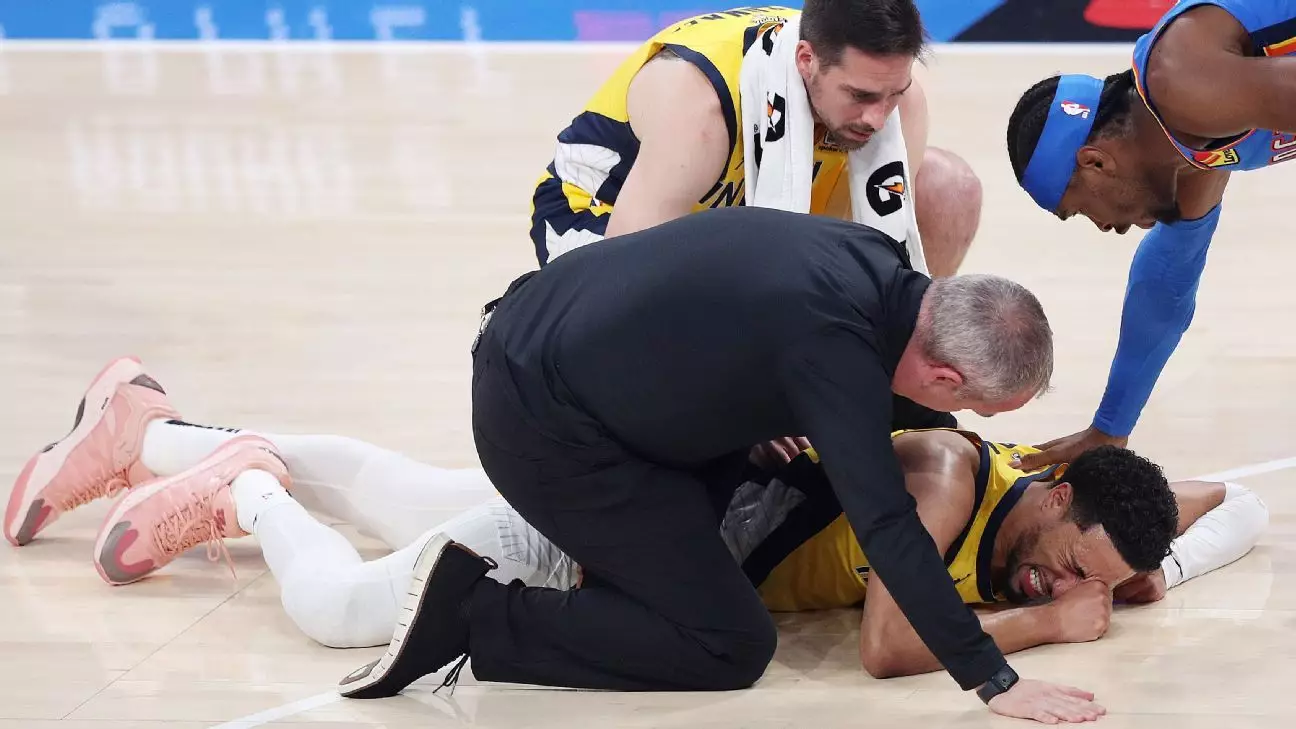The NBA world is no stranger to heart-wrenching injuries, but the recent news surrounding Indiana Pacers guard Tyrese Haliburton’s torn right Achilles tendon has hit particularly hard. Struck down in Game 7 of the NBA Finals against Oklahoma City, Haliburton’s misfortune threatens not only his immediate future but also his budding legacy in the league. This injury, sustained on the grandest stage, raises concerns about the trajectory of an otherwise promising career. The significance of this moment transcends mere physicality; it underscores the fragility of athletic excellence.
Haliburton’s injury was not a fluke. It was the culmination of a grueling postseason where he heroically battled through a calf strain. His determination to play despite physical limitations speaks volumes about his character and drive, but it also brings into question the consequences of such tenacity. The moment he crumpled without any contact—a stark reminder of how quickly fortunes can shift in sports—left not just fans but the entire Pacers’ organization in despair. Coach Rick Carlisle’s remark, “All of our hearts dropped,” beautifully encapsulates the collective anguish felt by players, fans, and executives alike.
Historical Context of Resilient Players
Haliburton is not just any player; he is a transformative force who revolutionized the Pacers’ game this season. His playoff run was nothing short of legendary, becoming the first player in NBA history to hit a tying or winning shot in the final seconds of every playoff round. With averages of 17.7 points and 9.0 assists, he redefined the role of a point guard in a modern context, combining high efficiency with clutch performance. His 197 assists shattered franchise records and served as a testament to his skill and vision on the court.
Yet, we must grapple with the unsettling reality that greatness often comes with a price. The path to sports immortality is littered with the wreckage of injuries that derail the careers of even the most promising athletes. Haliburton’s narrative serves as a stark reminder that the rigors of basketball demand not only physical prowess but also extreme mental fortitude. Watching his team face an uphill battle in the Finals without their leader compounded the emotional weight of his injury.
Legacy at Stake: The Fight Before the Fall
The fact that Haliburton continued to play through his calf strain emphasizes not just his commitment to the team but a broader issue in sports culture: the glorification of playing through pain. While admirable, it raises ethical questions about the responsibilities coaches and organizations have towards their players’ long-term health. Haliburton’s statement, “If I can walk, I want to play,” resonates with any athlete, but it also serves as a cautionary tale about the perilous line between bravery and recklessness.
As he walks down the path towards recovery, potential surgical options loom large, and fans can only hope for a blessed return. The impact of this injury stretches far beyond the Pacers’ current season; it can reshape team strategies and the landscape of the league as they navigate a future that may or may not include their star guard. Haliburton’s journey will not merely be a test of physical resilience but a profound exploration of what it means to be a champion, in sports and life. His story is one of potential thwarted but not extinguished, echoing the spirit of perseverance that defines athletes throughout history.

